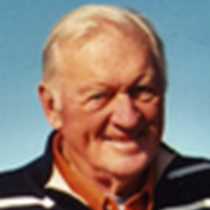All good things must come to an end. However, the memories of today’s activities and historical and natural lessons remain. Crisp weather with peek-a-boo sunshine, looming mountains (especially Mt. Adams and Mt. Hood), exposure to moving about by motor coach, bicycle, on foot, and aboard the good ship National Geographic Sea Bird, opened up wonders of the Columbia River central valley.
Today we followed the path of Lewis & Clark’s 1806 return eastward journey. The Dalles (from the French for “flagstone gutter”) rests on a sweeping bend of the Columbia River that includes the original “long and short narrows,” the ancient Celilo Falls fishery, and miles of sculptured basalt cliffs and valleys. After tying up at The Dalles, staff and guests explored the Columbia Gorge Discovery Center, which dominates the crest of a looming hill. The Center provided a raptor show, nature walks around the grounds, and a galaxy of interactive and stationary exhibits depicting growth and changes in this picturesque land. Several guests jumped aboard bicycles for a winding return to town on the paved River Front Trail.
Everyone had opportunities to learn about and experience this hardy land that produces a bounty of cherries and other fruits. Guests also learned about the region’s reputation as a railroad, barge, and vehicle hub and as a center of large historical murals throughout Old Town. History looms everywhere, characterized by the fact that the surrounding county of Wasco was once the largest county in the United States.
In the afternoon guests visited Maryhill, an eccentric but fascinating museum on the Washington State hillside above the Columbia River. Sam Hill, founder of this Italianate pile with formal gardens, wrote that its location marked where “the sun meets the rain.” After Sam failed to build a Quaker colony on these hills, with the help of several talented women (art patron Alma Spreckels, dancer Loie Fuller, and Queen Marie of Romania) he opened the large building as a museum. Today it holds an impressive collection of Auguste Rodin sculptures, one of the region’s finest collections of Native American artifacts, Queen Marie’s furniture, and a spectrum of modern and classical fine art. At Sam Hill’s nearby replicate of Stonehenge (dedicated to citizens of Klickitat County who died in the Great War, 1915-1918), historian Junius Rochester gave brief talk about Sam’s life and dreams.
Following the Sam Hill programs, guests visited a nearby fruit stand, donned life jackets, and boarded Zodiacs for a brief trip back to the anchored National Geographic Sea Bird. After Recap (presentations by historian Junius, naturalist Jeff Litton, and expedition leader Rab Cummings), guests watched Sea Bird transit the locks at John Day Dam.
Morning and afternoon motor coach narration was provided by geologist Grace Winer and Junius Rochester. Grace did an evening presentation about the Ice Age Floods.










